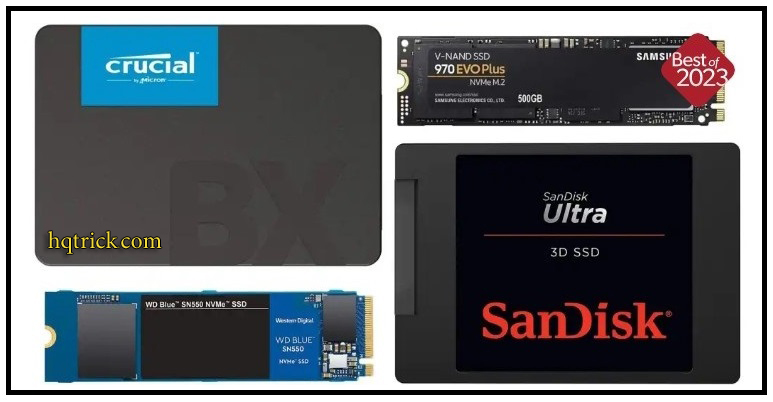SSD stands for Solid State Drive. It is a type of storage device used to store data in electronic devices, such as computers, laptops, and smartphones. Unlike traditional hard disk drives (HDDs), which use spinning disks to read and write data, SSDs use flash memory to store data.
Why consider upgrading to an SSD?
There are several reasons why you should consider upgrading to an SSD:
- Faster boot times: An SSD can significantly reduce the time it takes for your computer to boot up.
- Faster load times for programs and games: Programs and games will load faster, allowing you to work or play more efficiently.
- Improved overall performance: An SSD can enhance the overall performance of your old computer, making it more responsive and faster.
- Increased reliability: SSDs are more reliable than traditional hard disk drives because they don’t have any moving parts.
- Energy efficiency: SSDs consume less power than traditional hard disk drives, which can lead to longer battery life for laptops.
Overall, upgrading to an SSD can greatly improve the speed and performance of your computer, making it a worthwhile investment.
SSDs come in three designs: 2.5-inch housing and M.2 plug-in cards are the most common formats, while PCI Express plug-in cards are less common. You can only use M.2 if your notebook or PC motherboard has an M.2 slot. The advantage of M.2 and PCI Express cards is that you don’t need a data and power cable like with a 2.5-inch SSD.
But how do you choose the right SSD model?
To help you choose the best SSD for your needs, we’ve tested numerous drives and have provided our top picks below.
But first, you need to know what to consider when buying an SSD.
- Compatibility: Make sure the SSD is compatible with your computer or device. Check the interface, form factor, and size of the SSD to ensure it fits your device.
- Capacity: Decide how much storage capacity you need based on your usage. SSDs come in different capacities ranging from 128 GB to 4 TB or more. Consider your budget and usage before choosing a capacity.
- Speed: SSDs are faster than traditional hard drives, but some are faster than others. Look for the read and write speeds of the SSD, which are measured in megabytes per second (MB/s) or gigabytes per second (GB/s).
- Endurance: SSDs have a limited number of write cycles, so consider the endurance of the SSD. Look for the Total Bytes Written (TBW) rating, which indicates how much data you can write to the drive before it wears out.
- Brand and Warranty: Choose a reputable brand that offers a warranty to ensure reliability and quality.
- Price: SSDs are more expensive than traditional hard drives, so consider your budget and compare prices to find the best value for your money.
By considering these factors, you can make an informed decision when buying an SSD.
Samsung 870 EVO:(SATA SSD) The Best performance.
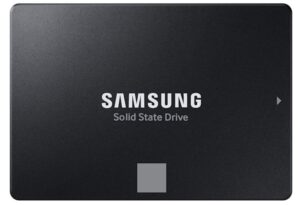
If you’re looking to upgrade your storage with a traditional 2.5-inch SATA drive instead of an M.2 SSD, the Samsung 870 EVO is a great option. It’s the fastest SATA SSD we’ve tested, with capacities up to 4TB and an affordable price point for its speed. Additionally, it comes with excellent management software and a long warranty period.
Pros :
- very good performance
- SSD performance is not affected by long writes
Cons :
- slightly more expensive than the competition
The Crucial BX500 (SATA SSD) The best price.
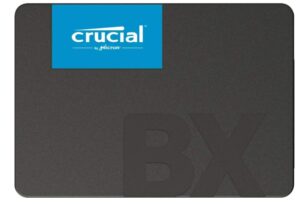
If you’re looking for a budget-friendly SSD with high capacity, the Crucial BX500 is a great option to consider. You can get the 1TB model for around 50$ , making it a very affordable choice.
Pros :
- good performance
- budget-friendly
Cons :
- Speed decreases when the L2 cache is running full
Crucial P3 NVMe SSD : (Best PCIe 3.0 SSD)
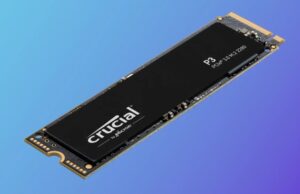
The Crucial P3 NVMe SSD is a solid choice for anyone looking to upgrade their system’s storage.
While PCIe 4.0 SSDs may be faster, the P3 delivers excellent performance for PCIe 3.0 systems, making it a great choice for those on a budget or with older hardware.
The P3’s performance is due in part to its use of the NVMe protocol, which allows for faster data transfer between the SSD and the rest of the system.
While there are faster SSDs on the market, they often come with a premium price tag.
Pros :
- good performance
- budget-friendly
Cons :
- lower TBW rating compared to other SSDs in its class or price range. that means a shorter lifespan in terms of data writing capability. However, it’s worth noting that even a relatively low TBW rating can still provide a substantial amount of usage before failure, especially for the average user.
write data at a slow speed when there is no buffer memory available to help manage the write operations
WD Black SN850X: (Best PCIe 4.0 SSD)

The SN850X by WD Black is one of the fastest SSDs we have tested, with speed comparable to that of the FireCuda 530. Moreover, in terms of overall performance, the SN850X offers excellent real-world transfer rates and top-notch random write performance. However, it comes at a slightly higher price than its competitors.
Pros :
- Great Speed
- Available up to 4TB
- optional heat sink available (1 and 2TB models)
Cons :
- expensive
- average TBW (shorter lifespan).
Crucial P3 Plus: PCIe 4.0 SSD (best price-performance ratio)
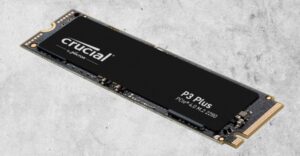
PCIe 4.0 SSDs may not be as affordable as SATA or PCIe 3.0 models, but as the technology gains popularity, we are seeing several models at attractive prices.
Among the affordable PCIe 4.0 SSDs, the Crucial P3 Plus is the best choice. It may not be the top performer, but it offers very decent transfer rates in practice. Additionally, the prices are regularly reduced, and you can often find the 1 TB model (check Amazon) for less than 70 euros, making it an excellent option for those looking for a lot of NVMe storage on a budget.”
Pros :
- Good price
- Great Speed
Cons :
- low TBW (shorter lifespan).
Adata Elite SE880: Best Portable SSD
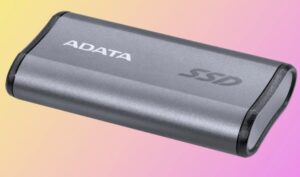
Adata’s Elite SE880 stands out among SSDs for its exceptional portability. Its dimensions are reminiscent of a USB stick, and it weighs a mere 300 grams, making it practically disappear when stored in your pocket. The Elite SE880 also performs very well in everyday tasks, as evidenced by its excellent results in real 48GB transfer tests.
However, the SSD falls behind significantly in longer continuous write tests, which may make it unsuitable for photo and video professionals working with large files. Nevertheless, due to its small form factor and respectable transfer rates, the Elite SE880 is an excellent choice for those seeking a portable SSD on the go.
Pros :
- Very fast USB connection (20Gbps)
- compact design
- 5-year warranty
Cons :
- low TBW (shorter lifespan).
- During extended sequential write operations, there is a noticeable reduction in speed.
